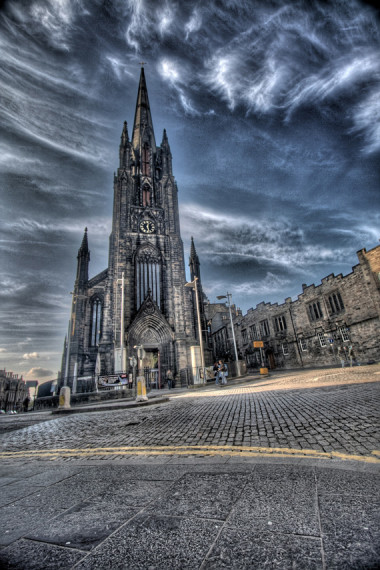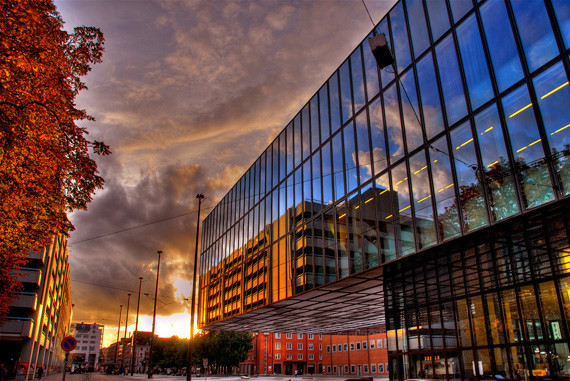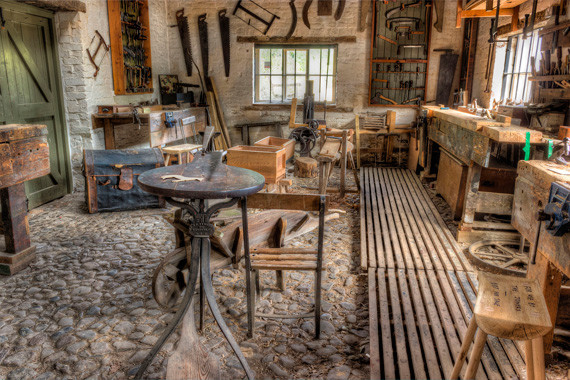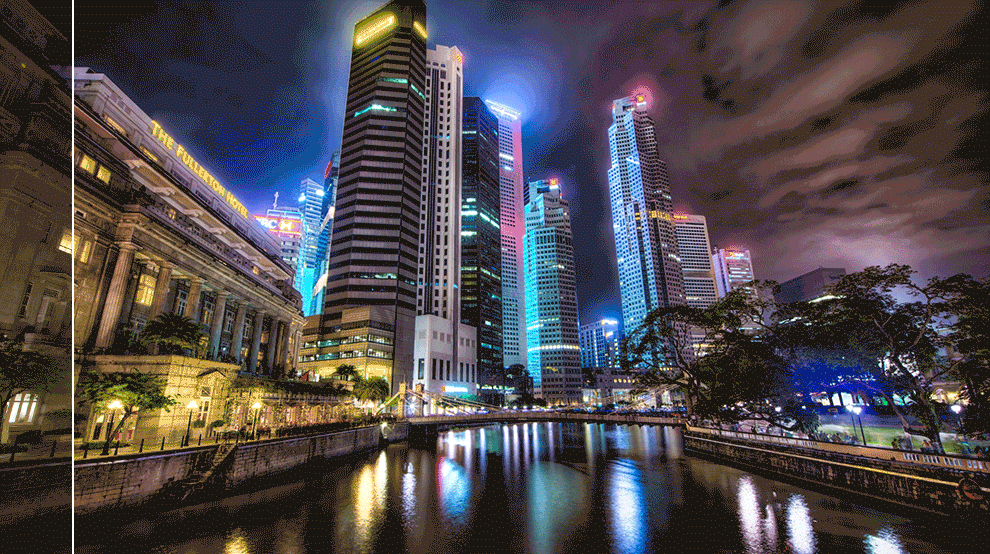Related reminder: special offer ending soon on the Aurora HDR Photo Editor
The rise of beginner digital SLR cameras has generated a great new following in photography. Amateur photographers find they now have more control over their photographs and ample opportunity to experiment outside the ‘point and shoot’ mentality. No longer do they have to wait until the whole roll of film has been exposed and then processed, often finding that the exposure wasn’t right on that one or it was out of focus on another. Now the shots can be viewed immediately and appropriate corrective steps taken at relatively little cost. No longer ‘a moment lost’.

Photo b Flickr user mike138.
This rise in popularity of photography has also spawned many post-processing computer applications. Admittedly some were around before the digital age, but many more have been born into the age, and one particular post processing methodology – HDR, or High Dynamic Range, is rapidly gaining in popularity.
High Dynamic Range (HDR), as the name suggests, attempts to extend the light and tonal range of images taken under normal conditions, and once a balanced HDR image is compared with the original shot the results are often outstanding. Ever hear the expression, “You just had to be there’, when someone is showing off photographs? What they are really saying is that their camera just cannot compete with the human eye when capturing the total range of light and dark areas in an image. OK. So it is about light, right? So why don’t we take more than one shot of the same scene at different shutter speeds and then combine them in a way to get the best of all of them? That is exactly what we do to prepare for HDR processing. Here are the requirements and steps to generate an HDR image.
You will need:
1. A camera with the capability to adjust exposure settings (bracketing preferred). If you have a camera with a bracketed function and multiple shot capability, with a quick scan through the manual you will find out how to take say three shots of the same scene: one at normal exposure, one say two stops below normal, and another two stops above.
2. A sturdy tripod. If you are going to be taking multiple shots it will help if there is as little camera movement as possible between shots.
3. A high contrast scene. HDR works best here. An HDR photograph of a grey card will always be just a grey card, but one of a threatening thundercloud formation over a sunlit landscape can make one drool!
4. You will need some HDR processing software. Such as Photomatix, Aurora or other.
5. You will need some time to learn and experiment. It doesn’t all happen by magic; you do actually have to work at it.

Photo by Flickr user slack12.
How to produce an HDR image:
1. Find your high contrast scene.
2. Place your camera on a tripod and, if possible, use a remote control to operate the shutter. Also, if you are shooting with a remote, cover the eyepiece.
3. Preferably set your camera to shoot RAW images. These images contain so much more exposure detail than JPEGs.
4. Set the camera to aperture priority. This will maintain the aperture setting to your chosen value and vary the shutter speed to obtain different exposures without upsetting depth of field.
5. Set the camera to manual focus and focus on your scene.
6. If possible, select Auto Exposure Bracketing from your camera menu options, and select multiple shot mode.
7. Take your three shots.
8. Back at home, download your photographs and import them into an HDR processing application. Generate the HDR (which will look awful on the limited capabilities of your monitor), and then tone map the HDR to your liking. There it is!
Note: if you don’t have bracketing or multiple shot then you will have to manually change the shutter speed between shots–but don’t move the camera!
The good and bad about HDR:
1. Good: Spectacular images can be produced with the right scene and the right tone mapping.
2. Good: The process is simple and flexible–you are the maestro!
3. Good: It lends a ‘fresh string to your bow’.

Photo by Flickr user highlights6.
4. Bad: It takes time to get it right. It’s a bit like riding a bike. You get the basics weighed off and then you start on the tricks.
5. Bad: Well, a consideration. Not all images lend themselves to HDR imaging. High contrast images work best.
6. Bad: HDR will always introduce a degree of noise into your images. This looks like grainy film.
7. Good: This has been recognized. Some noise can add a special effect, but, there are now software applications to remove or limit the noise. Noiseware is one of them.
8. Bad: You can go completely overboard with HDR and produce some of the most hideous images imaginable. Take it easy and focus on creating an image that you feel truly represents what you – or your eye, was seeing.
As stated previously, not every one will turn out a success so be patient and learn.
About the Author
Hi, I’m Terence Starkey. I am a long time camper and a keen photographer especially when out camping (camperscircle dot com). I have made several modifications to my camper to make life easier and I have included some photographs and drawings there. On the site I have a photograph gallery of special shots and a selection of my favourite HDR images. If you would like to know more use the Contact Us page on the site.
Aurora HDR Deal Ending Soon:
New tools, improved performance and more. Aurora HDR is now up to 2x and 4x faster on MacOS and Windows computers, respectively, and is now compatible with the brand-new Loupedeck+ photo editing console.
Bonuses included during the launch ($ 148 value):
- 119 Dramatic & Romantic Sky overlays ($ 29 value) – The ultimate collection of 119 dramatic high-res sky overlays to turn photos with boring skies into eye-catching works of art.
- Complete HDR Tutorial by Trey Ratcliff ($ 99 value) – This entirely new HDR tutorial is perfect for beginners to mega-advanced professionals who want to see all of the latest post-processing techniques. Lisa and Trey discuss their artistic inspirations and challenges, how they compose a shot, their camera settings, and much more. You’re then transported back to Trey’s studio where he slowly takes you step-by-step through his latest techniques.
- Deep Dive into Aurora HDR 2018 video by Trey Ratcliff ($ 20 value) – Trey Ratcliff, the most famous HDR photographer, shares his editing process in the new Aurora HDR 2018.
How to Get Aurora HDR for a Discount:
In addition to all the bonuses, if you use the coupon code PICTURECORRECT at checkout you can save an extra $ 10!
Deal found here: Aurora HDR 2018 1.2.0 Update Launch
Go to full article: HDR Photography – The Facts
What are your thoughts on this article? Join the discussion on Facebook
PictureCorrect subscribers can also learn more today with our #1 bestseller: The Photography Tutorial eBook
The post HDR Photography – The Facts appeared first on PictureCorrect.
